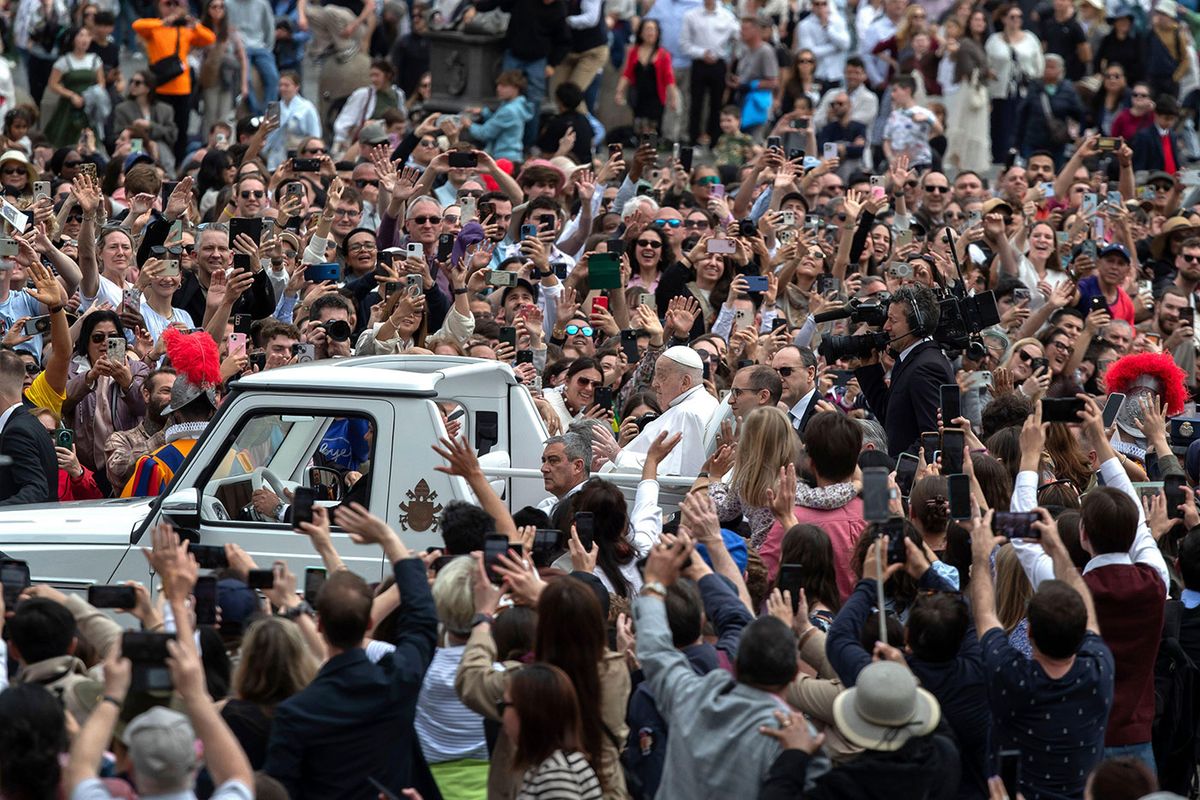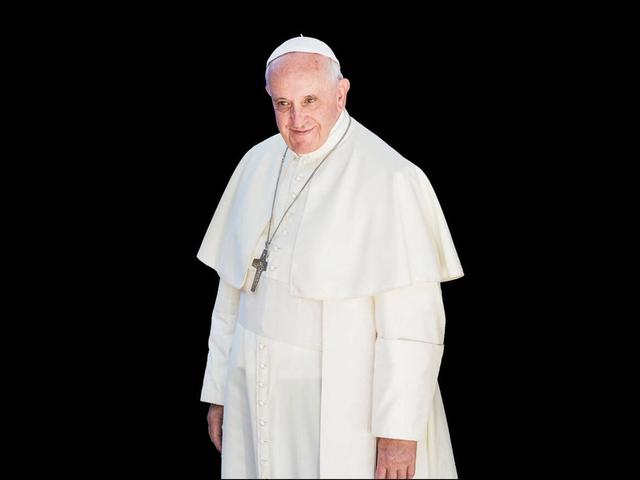World leaders today paid tribute to Pope Francis after the spiritual leader of the Catholic church, and its 1.3 billion followers, died this morning at Casa Santa Marta, the Vatican guest house where he had lived since being elected to the papacy 12 years ago. His death, at 7.35am local time, on 21 April, was announced by Cardinal Kevin Farrell, the papal camerlango, or chamberlain, speaking on the Vatican's TV channel.
The task of electing Francis’s successor as a spiritual leader—but also as proprietor in trust of the Vatican’s great art and architectural treasures, and the liturgical regulations that so affect the design and use of the church’s built heritage—will begin in about ten days, once the pope has been buried, at his own wish, at the Basilica of Santa Maria Maggiore in Rome, rather than in the Vatican grottoes beneath St Peter’s Basilica; and once the nine days’ official mourning is complete. In a process that traditionally lasts two to three weeks, the Catholic Church’s 138 cardinals will meet in conclave, seated in the Sistine Chapel beneath its matchless ensemble of late 15th- and early 16th-century frescoes, to choose the 267th holder of the papal office.
Pope Francis, who was always more readily a priest of the streets than a prince of the church, was remembered by Joe Biden, the former US president, in a post on the social media channel X, as the “People’s Pope”. “He was unlike any who came before him,” Biden wrote. “Above all, he was a Pope for everyone. He was the People’s Pope—a light of faith, hope and love.”
Keir Starmer, the UK prime minister, said in a statement that the late pope’s “leadership in a complex and challenging time for the world and the church was often courageous, yet always came from a place of deep humility. Pope Francis was a pope for the poor, the downtrodden and the forgotten. He was close to the realities of human fragility, meeting Christians around the world facing war, famine, persecution and poverty. Yet he never lost the faith-fuelled hope of a better world.”
King Charles III, who visited the pope with Queen Camilla earlier this month, said in a statement that Francis would be “remembered for his compassion, his concern for the unity of the Church and for his tireless commitment to the common causes of all people of faith, and to those of goodwill who work for the benefit of others. His belief that care for Creation is an existential expression of faith in God resounded with so many across the world.”
The king’s reference to “care for Creation” was a nod to one of Francis’s most important public interventions: the encyclical Laudato Si’ (Praise Be to You, 2015) in which Francis addressed the global climate crisis—the first time that the Catholic church had made climate change part of its teaching. During his visit to the Venice Biennale in 2024, Francis had returned to the subject, speaking to a crowd of 10,000 in Piazza San Marco about the danger that climate change posed to the city. “Venice is one with the waters on which it stands, and without the care and protection of this natural environment it could even cease to exist.”
Ferdinand Marcos, the president of the Philippines, remembered Pope Francis as the "best pope in my lifetime" in a Facebook post. "A man of profound faith and humility, Pope Francis led not only with wisdom but with a heart open to all, especially the poor and the forgotten," Marcos said.
The Philippines, a country whose population is 80% Catholic, is the home country of one of the cardinals favoured to succeed Francis. Luis Antonio Tagle, the former Archbishop of Manila, holds a senior evangelising role at the Vatican, and is sometimes known as the “Asian Francis” for his progressive views and good-humoured approach.
The progressive legacy of Pope Francis
The identity of Francis’s successor, in an office that is always of great global consequence, will be all the more charged with significance since Francis was one of the few progressive voices in international politics able to speak up effectively against the rise of strongman political leaders. He had emerged two months ago as the one public figure with the stature and moral authority to directly oppose the quarrelsome behaviour of the newly re-elected US president, Donald Trump.
In February 2025, shortly before he was admitted to hospital with double pneumonia—an illness that nearly claimed his life seven weeks before his eventual demise—Pope Francis issued a letter criticising the immigration crackdown, and announcement of mass deportation of immigrants, imposed by President Trump, saying that deporting people who fled their homeland because of exploitation and persecution "damages the dignity of those people and places them in vulnerable and defenceless positions”.
That public statement was issued at a time when few global leaders were openly questioning the disruptive actions of the US president in dismantling the country’s overseas aid and diversity programmes, its public health, educational, cultural and climate change measures.
The pope returned to his theme of justice and peace, on the day before his death, in his final Easter Sunday address to the world, which he introduced briefly from the balcony of St Peter’s, but which was read out for him by an aide.
“What a great thirst for death, for killing, we witness each day in the many conflicts raging in different parts of our world!” the Pope’s message declared in the Vatican’s own English translation from the Italian. “How much violence we see, often even within families, directed at women and children! How much contempt is stirred up at times towards the vulnerable, the marginalised and migrants!”
“On this day,” the pope’s message continued, “I would like all of us to hope anew and to revive our trust in others, including those who are different than ourselves, or who come from distant lands, bringing unfamiliar customs, ways of life and ideas! For all of us are children of God!”
The echo of the pope’s February letter addressing the US administration’s attitude towards immigrants felt all the more pointed to some observers because earlier in the day the pope had received the US vice-president, JD Vance, a recent Catholic convert, in a brief private audience in which global affairs were discussed.
Pope Francis’s final days
Pope Francis’s death came just over two months after he was admitted to the Gemelli hospital, in Rome, suffering from a lung infection, on 14 February, and pronounced to be critically ill. Twice he was thought to be close to death. Prayer vigils for his recovery were set up around the world and the cast of the prize-winning film Conclave, about the machinations behind the election of a new pope—for which the Sistine Chapel (where the cardinals of the church traditionally sit in convocation to choose a new pontiff) had been recreated on the backlots of the fabled Cinecittà studios, in Rome—sent their best wishes for his recovery.
He returned to his Vatican quarters after 38 days in hospital on 23 March to recuperate at home. He died four weeks after leaving hospital, and one day after making his appearance on Easter Sunday, when he was driven in his popemobile through the crowds in St Peter's Square for one final time.
For those who look to Francis’s successor to maintain his progressive legacy and speak for the poor and against authoritarian regimes, Catherine Pepinster, the former editor of the Catholic journal The Tablet, offered food for thought in an article for The Guardian. She observes that Francis had done much to shape the church in his image given that, in his 12 years as pope, it had fallen to him to select 110 of the 138 cardinals who will choose his successor.



